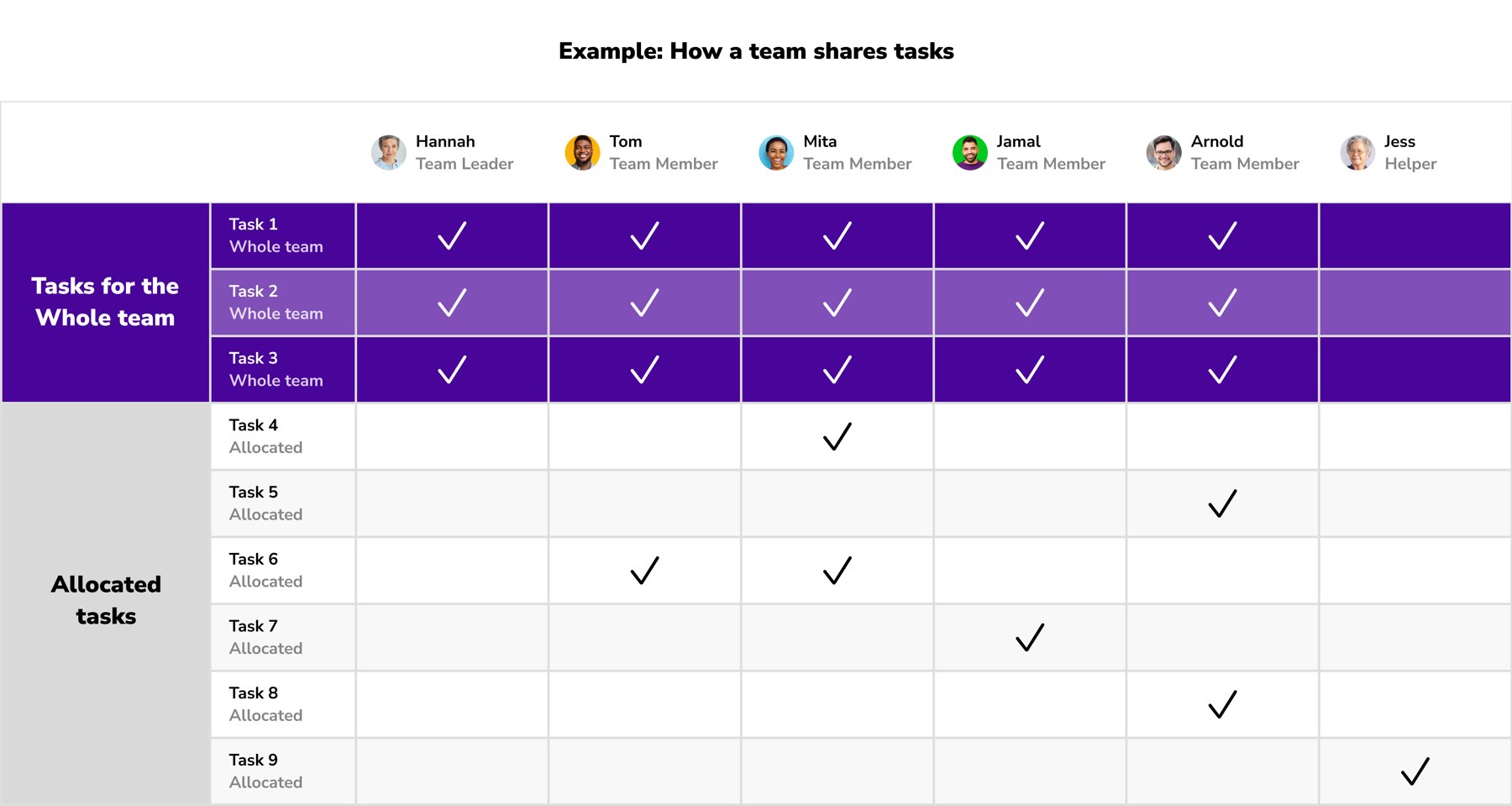How volunteers work in teams
How volunteers work in teams
On this page
- How our volunteer teams work together
- How we share tasks among a team
- What leading a team means
This information should support what is being shared in local briefings and meetings with your local Transformation Leads and leadership teams. Work with your Transformation Leads to plan how and when you will make these changes locally.
How our volunteers work in teams
We want flexible volunteering to be a reality. We also want volunteering to be a smooth journey when people join us (or when we sadly say farewell).
To do this, we’re using team descriptions. Unlike role descriptions, where one volunteer takes on specific responsibilities (this can be a barrier for some volunteers joining or staying in Scouts), this approach means we can share the load among the team.
We're making it clear that volunteers can get involved with just the tasks that work for their skills, interests and free time. Teams can decide how to split the tasks up, according to who's in the team and what the local needs are.
Our new approach makes it easier for our current teams, as volunteers can give their time in a more sustainable way. It helps volunteers build knowledge, experience, and confidence. And it makes it easier for them to change their involvement when their circumstances change. As such, they stay volunteering for longer. And in the future, more volunteers will want to join Scouts and give their time as part of a flexible team.
There are two types of tasks:
- Tasks for the whole team – Everyone helps with these tasks.
- Allocated Tasks – The Team Leaders make sure there’s at least one volunteer responsible for each task and supports them to get it done.
Here’s an example:
- Hannah is one of the Team Leaders. She does whole team tasks 1-3. She also supports Mita with tasks 4 and 6 during term time.
- Arnold is a Team Member. He does whole team tasks 1-3 and allocated tasks 5 and 8. He also supports Tom and Mita with Task 6 when they are busy preparing for events.
- Jess is a helper. She does allocated task 9. She also supports the team with other tasks when she has extra availability. She's building her skills and confidence, and hopes to join the team in the future.
What leading a team means
Within our new structure, Team Leaders and Lead Volunteers work with Team Members to share tasks out and make sure the team runs smoothly.
Other ways of sharing tasks
For some tasks and responsibilities, we need to make sure volunteers have the right skills, experience, learning or qualifications. We can give someone permission to do these tasks by giving them an accreditation.
